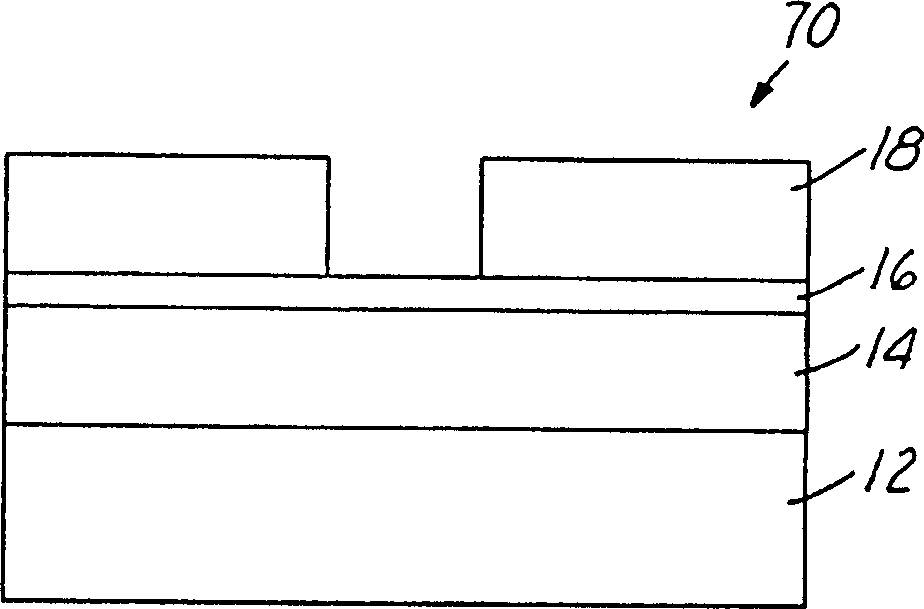Method for forming porous dielectric material layer on semiconductor device and formed device
A technology of dielectric material layer and dielectric material, which is applied in semiconductor/solid-state device components, semiconductor devices, semiconductor/solid-state device manufacturing, etc.
- Summary
- Abstract
- Description
- Claims
- Application Information
AI Technical Summary
Problems solved by technology
Method used
Image
Examples
Embodiment Construction
[0029]The invention discloses a method for forming a dielectric material layer in an electronic structure, more particularly, discloses a method for forming a porous dielectric material layer in an electronic structure, the method first forms a non-porous dielectric material layer , followed by local curing, patterning, and finally curing the layer at a temperature higher than the local curing temperature to transform the non-porous dielectric material into a porous dielectric material.
[0030] The method is carried out by the following steps: first providing a pre-processed semiconductor wafer, depositing a non-porous dielectric material layer on the pre-processed semiconductor wafer, curing the semiconductor wafer at a first temperature not higher than 350°C, defining and The layer of nonporous dielectric material is patterned and the semiconductor wafer is cured at a second temperature higher than the first temperature to convert the nonporous dielectric material into a por...
PUM
| Property | Measurement | Unit |
|---|---|---|
| thickness | aaaaa | aaaaa |
| thickness | aaaaa | aaaaa |
Abstract
Description
Claims
Application Information
 Login to View More
Login to View More - R&D
- Intellectual Property
- Life Sciences
- Materials
- Tech Scout
- Unparalleled Data Quality
- Higher Quality Content
- 60% Fewer Hallucinations
Browse by: Latest US Patents, China's latest patents, Technical Efficacy Thesaurus, Application Domain, Technology Topic, Popular Technical Reports.
© 2025 PatSnap. All rights reserved.Legal|Privacy policy|Modern Slavery Act Transparency Statement|Sitemap|About US| Contact US: help@patsnap.com



